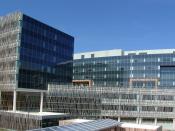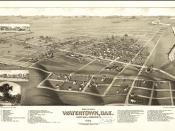It can be shown through research that there is a digital divide in the United States and across the globe. The basic concept of the digital divide has to do with the "haves" and the "have nots". It refers to the gap between people with effective access to digital information technology and those without the access. There are many surveys that compare the computer use of those in the United States with the rest of the world, and there is evidence to suggest that the digital divide is partly based on socioeconomic, racial, generational, or geographical reasons. The term global divide refers to the digital divide between countries (Wikipedia, 2008). High-speed connections will enhance a nation's productivity and economic competitiveness, improve education, and expand health care options for patients and doctors. In addition, access to high-speed networks can erase geographic, economic, and cultural gaps. With high-speed connections, workers can find jobs, small businesses can participate in global markets, rural doctors can consult with specialists, and students can take classes that are taught from across the globe.
This paper will highlight where the digital divide is most prevalent, some reasons for the reduced access, and what we can do as IT professionals to help close the gap.
Computer use first started to be tracked by the US Census Bureau in 1984 when it was noted that 8.2% of households in the US had a computer. Internet use did not start to be tracked until 1997 when 36.6% of the households reported computers with only 18% having access to the internet. By 2003, the numbers grew rapidly to 61.8% and 54.7% respectively (US Census Bureau, 2003). The growth of the digital network in the US has been fast, but there is evidence to show there is a digital divide. Households with incomes...


